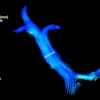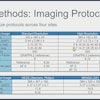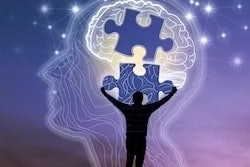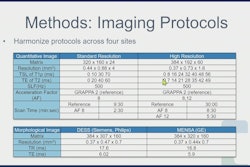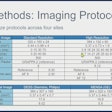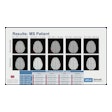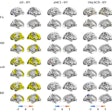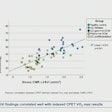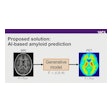HONOLULU - 7-tesla MRI illuminates the "bioenergetic parameters" of the brains of people with depression, according to research presented May 15 at the ISMRM meeting.
The findings reveal "new insights into the cerebral energetic alterations underlying fatigue in young adults with depression," presenter Xiao-Hong Zhu, PhD, of the University of Minnesota in Minneapolis, told session attendees.
"We show for the first time that depression-induced fatigue is associated with abnormal neuroenergetics measured directly in the brains of young adults with and without depression," she said.
Major depressive disorder affects more than 20 million adults in the U.S. and 300 million worldwide -- and the prevalence of [the condition] in the U.S. has increased by 60% in the past decade, according to Zhu. One of the symptoms of major depressive disorder is low energy, and it can have a severe impact on patients' daily lives, she noted. That's why assessing individuals' "neuro-energetic states" -- that is, the brain's energetic and metabolic processes that impact its activity and function -- can give clinicians a better understanding of depression and ability to manage it in their patients.
"Increasing evidence suggests that impaired mitochondrial bioenergetics is a key factor in the pathophysiology of depression," she explained, explaining that most research on this has relied on data from peripheral blood mononuclear cells or tissues. The technique of phosphorus-31 MR spectroscopy and imaging offers insights into energy metabolism and other biochemical processes; it has not only improved sensitivity but has made way for quantitative assessment of bioenergetic parameters in the brain (i.e., the cerebral metabolic rate of adenosine triphosphate [ADP] production through ATPase enzyme reaction. ATP is the "primary energy currency of cells").
Zhu and colleagues conducted a pilot study that included nine young adults with depression and nine without the condition, for a total of 18 individuals. Study participants underwent both a clinical depression assessment (the Montgomery-Asberg Depression Rating Scale and the Fatigue Severity Scale) and the MRI exam. The researchers then quantified and analyzed particular bioenergetic parameters using depression and fatigue severity scores.
The group reported the following:
- Depression, and particularly fatigue, was associated with abnormalities in cerebral ATP production rate in the brains of young adults both with and without depression.
- Young depression patients had an increase in the resting-state brain ATP production rate that correlated with fatigue severity – findings that suggest "a compensatory mechanism that occurs early in the disease stage."
The takeaway? This 7-tesla MRI technique shows promise for providing "a powerful neuroimaging tool to directly and quantitatively assess brain bioenergetic status of depression patients, which should be extremely valuable for better understanding depression and developing effective treatments," Zhu concluded.
